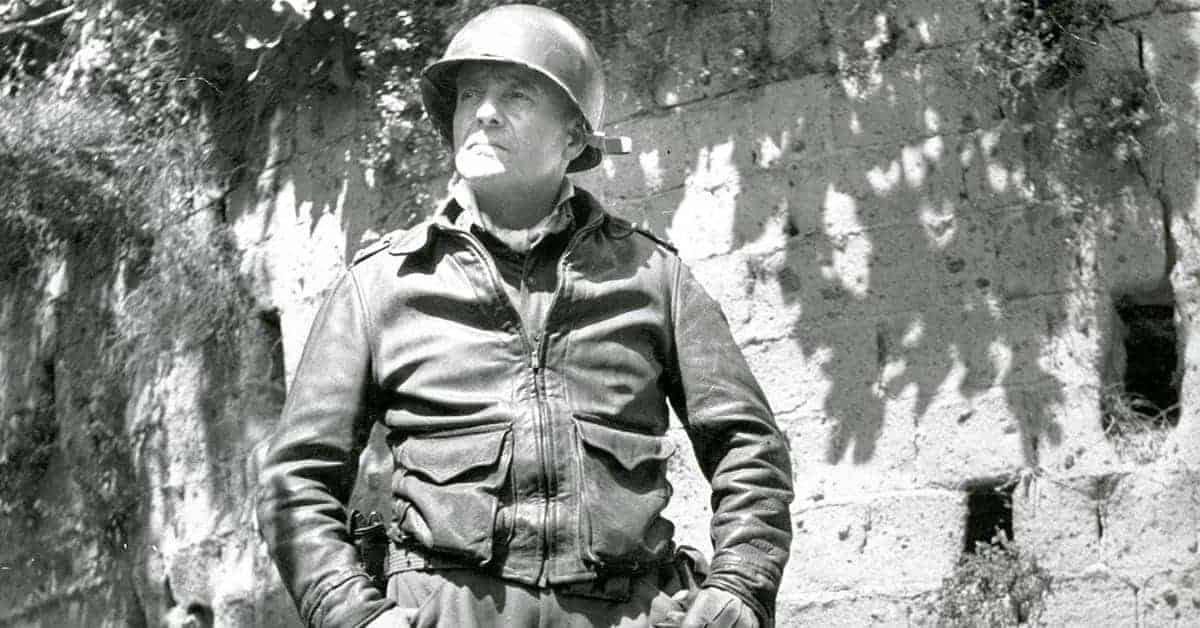Lucian King Truscott, Jr. was born in Texas in 1895. When he was 16-years-old, he lied and said that he was 18 so that he could attend the summer term of the state normal school in Norman, Oklahoma. He got his certification and worked as a teacher until the United States entered World War I in 1917, prompting Truscott to join the army. When he joined the army, he lied again, telling them that he was a high school graduate and had completed a year of college so that he could enter into officer training.
When he left officer training he was given the rank of second lieutenant of the cavalry. Throughout the first world war he stayed in the United States and patrolled the border with Mexico. He never saw combat during the war and he thought it would hamper his military career but he stayed with army anyway serving in a number of different cavalry and staff assignments over the years.

He had reached the rank of Colonel when the United States entered into World War II. He never saw himself as a General because he had no combat experience and he had not attended West Point, two key factors in rising through the ranks. But as it turned out all it would take would be a love of Polo that would put Truscott on the road to being a decorated General.
In the early days of 1942 he was sent to Europe with other officers in order to get combat experience. He was sent to work with British Commando units. Truscott wondered why he would be chosen to learn about specializing in amphibious operations when he was a member of the cavalry with no combat experience. But as it turned out his reputation as one of the army’s foremost practitioners of Polo was what led him to being handpicked for the mission.
Eisenhower briefed Truscott on working with Lord Louis Mountbatten of the Combined Operations Command, telling him that Lord Louis had written a book on Polo. Eisenhower hoped that this would be a starting point for the two men and that they would be able to quickly form a relationship. Truscott was tasked with bridging the gap between the two commands, a task that led to him rising through the ranks faster than he ever imagined.
On June 19, 1942 he was promoted to the rank of one-star brigadier general. In August of 1942 he was the primary U.S. observer on the Dieppe Raid which was considered to be the first action by U.S. troops against the Germans during World War II. The failure of the Dieppe Raid was a learning experience for Truscott. He took what he learned and applied it to the American amphibious landings at Operation Torch. The landings were successful but Truscott was not satisfied, he thought there was not enough coordination in command during the landing.
His success earned him his second star in November 1942 and Eisenhower would then appoint him as a deputy commander. He took his new position and the lives of the men entrusted to his care very seriously and did everything he could to ensure that the loss of life would be minimal. In 1943 he was put in command of the 3rd Infantry Division.
The 3rd Infantry Division was preparing for the Allied invasion of Sicily. The planned invasion was called Operation Husky and Truscott knew that the American soldiers were nowhere near as good as their enemies. To remedy that he ran them to the ground in training. He was only 48, and one of the youngest division commanders in the U.S. Army but he quickly became known as one of the toughest as he brought the 3rd Infantry Division up to a very high standard.
While the men may have complained, Truscott had a very simple philosophy. He believed that an ounce of blood spilled during training would prevent a gallon of blood from being spilled on the battlefield. The training paid off in July of 1943 when the American landing at Sicily was a success. His division was able to cover great distances of the mountainous terrain at a very high speed. The 3rd Infantry division was able to move at 4 miles per hour over the rough terrain which was much faster than the standard of 2.5 miles per hour.

The marching pace of the 3rd Infantry Division became known as the “Truscott Trot” and it was modeled after the movements of the Roman Legions. The division quickly got a reputation for being the best-trained and the best-led division in the Seventh Army. Truscott himself gained a reputation for being one of the most reliable generals in the army caring not for the glory of war but rather doing what it took to win while limiting the loss of life.
It was perhaps his actions toward the end of the war and after the war that proved just how remarkable a man Truscott really was and led to him becoming a four-star general.

